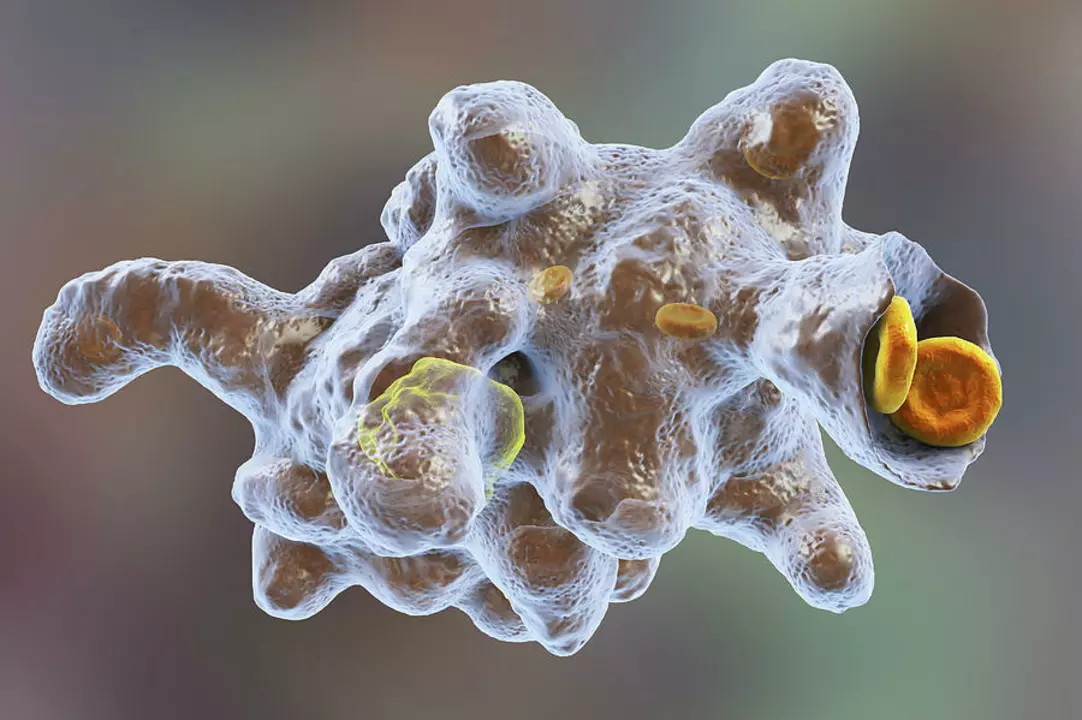Amoeba Infections: What They Are and How to Deal With Them
Ever wondered why a simple sip of water can make you sick? That’s often an amoeba at work. These tiny parasites love warm, damp places and can slip into your gut or even brain if they get the chance.
How You Get Infected
The most common culprit is Entamoeba histolytica. It lives in contaminated food or water, especially raw vegetables washed with unsafe water. Eating a salad from a street stall in a country with poor sanitation can expose you.
A different beast, Naegleria fowleri, loves warm freshwater lakes. If you dive into a lake and the water goes up your nose, the amoeba can travel to your brain and cause a deadly infection called primary amebic meningoencephalitis.
Another player is Giardia lamblia. It’s not an amoeba but often shows up in the same searches because it causes similar stomach upset. It spreads through untreated water, like from mountain streams.
Telling Signs and Diagnosis
Gut‑related amoebas cause diarrhea that can be bloody, abdominal cramps, and fever. The symptoms may look like a regular food poisoning case, which is why many people ignore them at first.
Brain infection from Naegleria starts with a severe headache, stiff neck, nausea, and rapid confusion. It progresses fast, so you need emergency care.
Doctors confirm an infection by testing stool samples for cysts or trophozoites, or by doing a brain scan and spinal fluid analysis for the rare brain cases.
Treatment Options
If your doctor finds Entamoeba, they’ll likely prescribe metronidazole followed by a second drug like paromomycin to clear any leftovers. The course is usually 7‑10 days, and most people feel better within a week.
For Naegleria, the drug of choice is amphotericin B, often combined with miltefosine. Early treatment can improve odds, but survival rates stay low.
Giardia responds well to tinidazole or metronidazole, and symptoms usually vanish after a short course.
Prevention Tips You Can Use Today
Boil water for at least one minute if you’re unsure about its safety. When traveling, stick to bottled drinks and avoid ice made from tap water.
Wash fruits and veggies with clean water, then peel them if possible. For lake swimmers, wear a nose plug or keep your head out of the water.
Hand‑washing with soap after using the bathroom and before meals cuts down the risk dramatically. It’s cheap and works every time.
If you suspect an infection, don’t wait for it to clear on its own. Early testing and treatment are key to avoiding complications.

Amoeba Infections in Children: What Parents Should Know
Finnegan O'Sullivan May 13 6As a parent, it's important to be aware of the potential risks of amoeba infections in children. These single-celled organisms are commonly found in water sources, and can cause serious illnesses if ingested, inhaled or come into contact with open wounds. Symptoms of amoeba infections can include fever, vomiting, and severe headache, which may be mistaken for other common childhood illnesses. To prevent amoeba infections, ensure your child practices good hygiene, avoids contaminated water and always has adult supervision near water bodies. Education and awareness are key in protecting our children from these dangerous infections.
More Detail